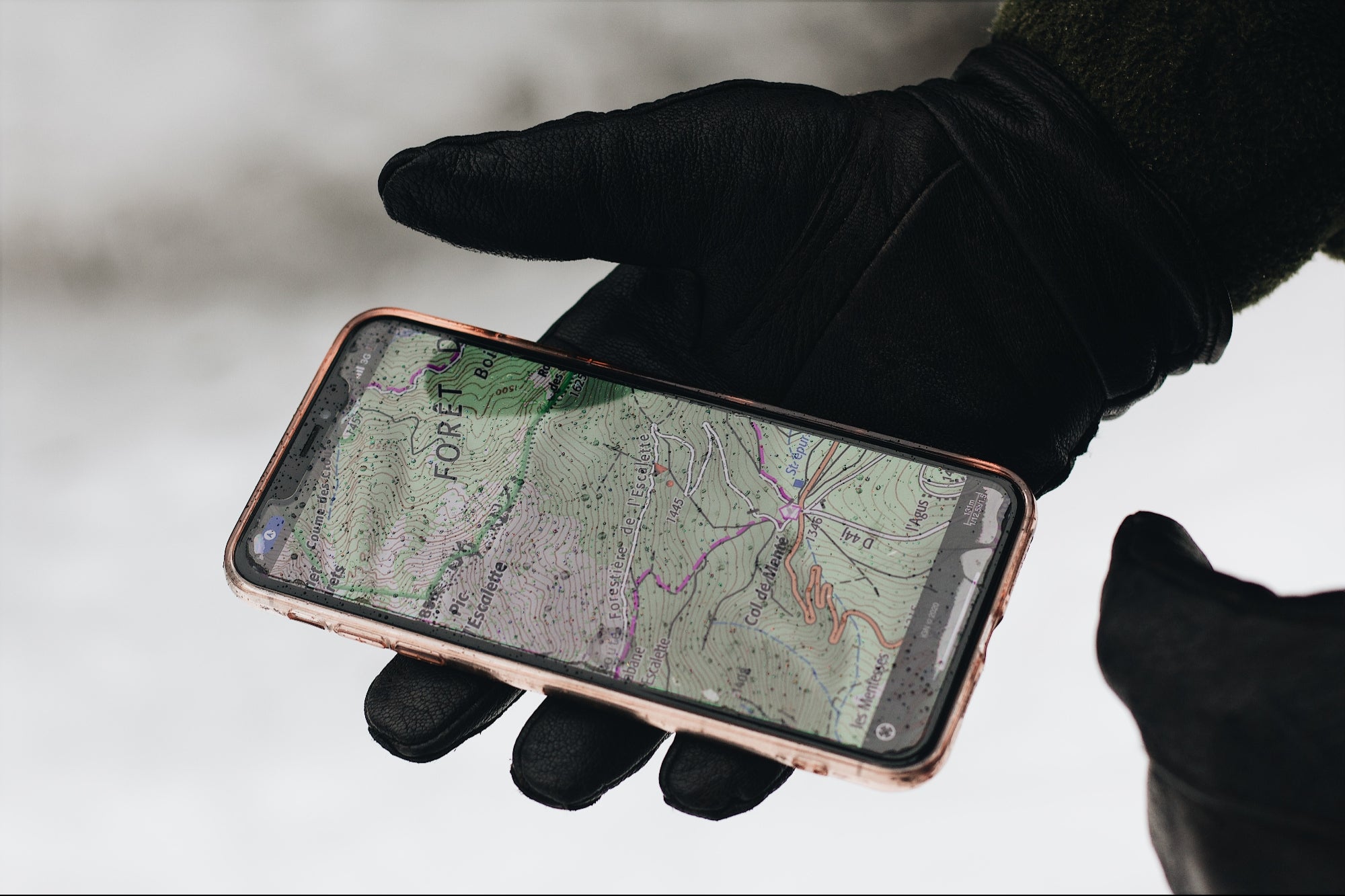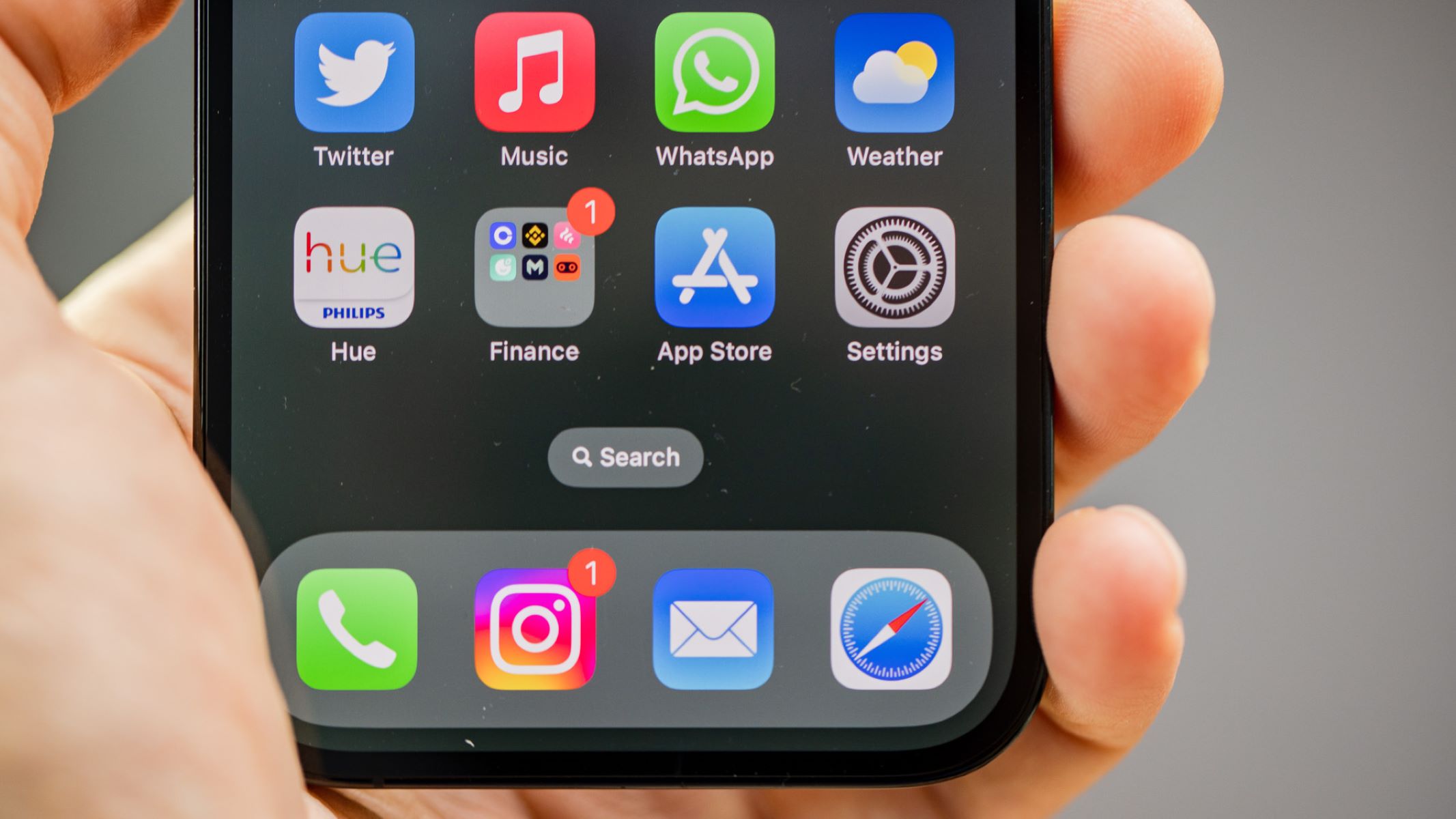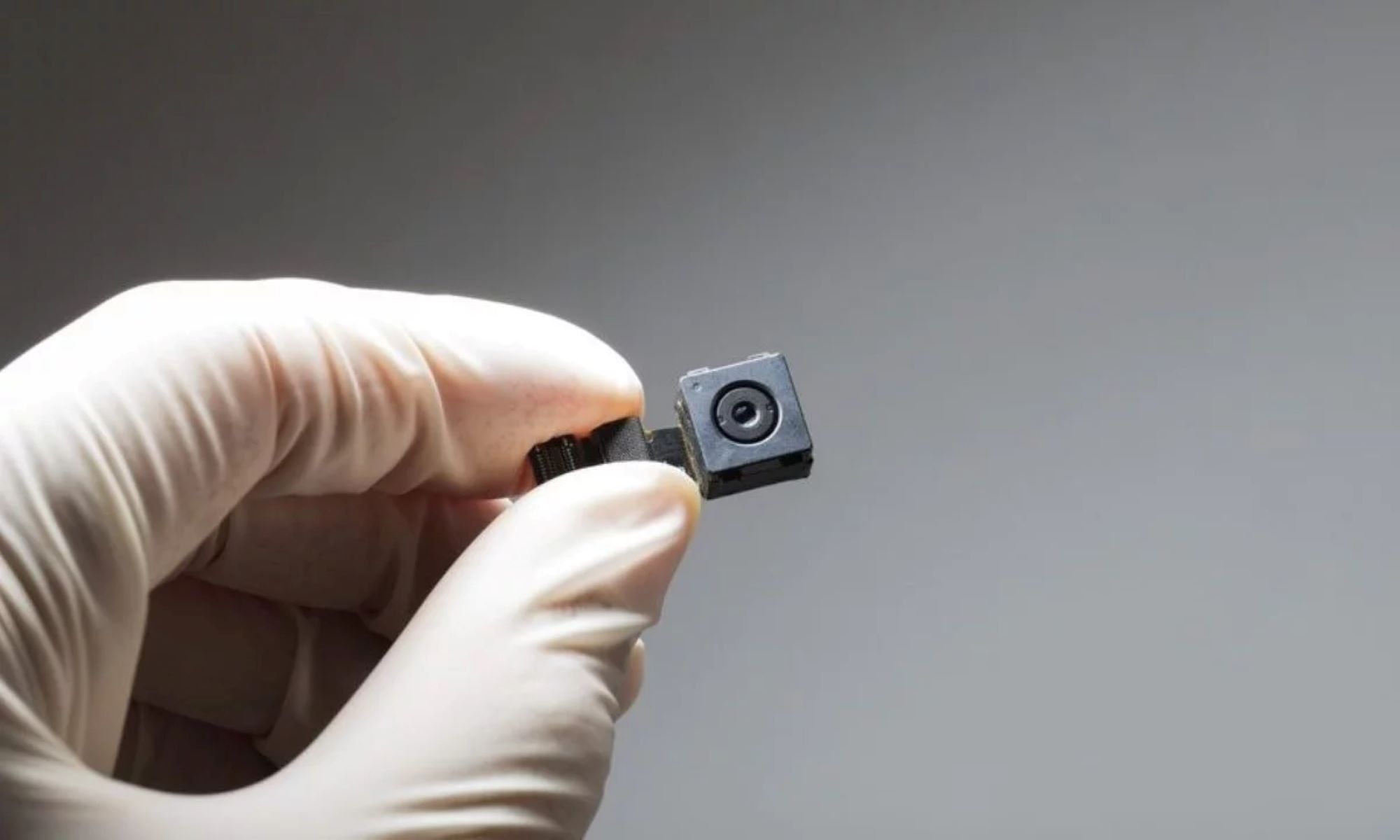Introduction
Welcome to our comprehensive guide on how to find spy apps on your phone. In today’s digital age, our smartphones hold a vast amount of personal information, which makes them an attractive target for those who seek to invade our privacy. Spy apps are designed to covertly monitor and gather data from a device without the user’s consent or knowledge. These apps can range from harmless monitoring tools used by parents to more malicious software used for unauthorized surveillance.
It’s essential to be aware of the presence of spy apps on your phone, as they can compromise your personal data, security, and peace of mind. In this guide, we will provide you with valuable insights and techniques to help you detect and remove spy apps from your device.
We will begin by understanding what spy apps are and how they operate. By familiarizing ourselves with their functionality, we can better identify the signs that indicate the presence of spyware. With this knowledge, we can then proceed to check for suspicious apps on our phones. We will explore various techniques, such as analyzing data and battery usage, monitoring phone behavior, scanning for malware, and verifying app permissions to help uncover any hidden spy apps.
While this guide aims to equip you with the necessary tools and strategies to identify spy apps, it’s important to note that prevention is key. We will also discuss additional security measures you can implement to protect your device and personal information from potential threats.
By the end of this guide, you will have a better understanding of spy apps, the signs that indicate their presence, and the steps you can take to safeguard your mobile privacy. Let’s dive in and take control of your device’s security!
Understanding Spy Apps
Spy apps, also known as monitoring apps or spyware, are software applications that are designed to clandestinely monitor and collect data from a target device. These apps can be installed on smartphones, tablets, or computers, and they operate in the background, often without the user’s knowledge. While some spy apps have legitimate uses, such as parental control or employee monitoring, others are malicious and used for unauthorized surveillance.
The functionality of spy apps can vary, but they typically have a range of features that allow the attacker to access and gather sensitive information from the target device. These features can include:
- Call and message monitoring: Spy apps can record and access phone calls, text messages, and instant messages, providing the attacker with a comprehensive view of the target’s communication.
- GPS tracking: Spy apps can track the physical location of the device, allowing the attacker to monitor the target’s movements in real-time.
- Keylogging: Some spy apps can capture keystrokes, enabling the attacker to obtain login credentials and other sensitive information.
- Media access: Spy apps can remotely access and download photos, videos, and other media files from the target device.
- Remote control: Certain spy apps provide the attacker with the ability to remotely control the target device, allowing them to perform actions such as taking pictures, activating the microphone, or even controlling apps and settings.
It is important to note that the installation of spy apps typically requires physical access to the target device. This can occur when someone with malicious intent gains temporary access to the phone or when a user unknowingly installs an app infected with spyware. In some cases, attackers may exploit vulnerabilities in the device’s operating system to remotely install spy apps.
While spy apps can be used for legitimate purposes, such as monitoring the online activities of children or ensuring employee productivity, they can also be a serious invasion of privacy when used without consent. It is crucial to identify the signs of spyware on your device to protect your personal information and maintain your privacy.
In the following sections, we will explore the common signs that indicate the presence of spy apps on your phone and discuss the methods you can employ to detect and remove them. Your privacy is important, and we are here to help you ensure that your mobile device is secure and free from unauthorized surveillance.
Signs of a Spy App
While spy apps are designed to operate covertly, there are some telltale signs that can indicate their presence on your device. Being aware of these signs can help you identify if your phone is being monitored without your consent. Here are some common signs to look out for:
- Unusual Battery Drain: Spy apps running in the background can consume a significant amount of battery power. If you notice your battery drains much faster than usual, it could be a sign that a spy app is actively operating on your device.
- Increased Data Usage: Spy apps often rely on sending captured data to remote servers. If you notice a sudden spike in your data usage, especially when you’re not using your device excessively, it may indicate that a spy app is transmitting data without your knowledge.
- Unusual Phone Behavior: Spy apps may cause your phone to behave erratically. This can include random reboots, strange error messages, or apps crashing unexpectedly. If you notice any unusual behavior on your device, it’s worth investigating further.
- Background Noise: Some spy apps can activate the microphone remotely, resulting in background noise during phone calls or when your device is idle. If you hear strange noises or echoes during calls, it could be a sign that your phone is being monitored.
- Excessive Ads or Pop-ups: If you suddenly encounter a barrage of ads or pop-ups on your device, even when you’re not browsing the internet, it might be a sign that a spy app is operating in the background and affecting your device’s normal functionality.
It’s important to note that these signs alone may not be definitive proof of a spy app, as other factors can also contribute to these behaviors. However, if you experience multiple signs simultaneously or consistently, it is advisable to take further steps to investigate the possibility of spyware on your device.
Now that you are aware of the signs, in the next section, we will explore various methods to check for suspicious apps on your phone, enabling you to identify and remove any potential spy apps effectively.
Checking for Suspicious Apps
When it comes to detecting spy apps on your phone, one of the first steps is to check for any suspicious or unfamiliar applications installed on your device. Here are some effective methods to identify and remove potential spy apps:
- Review Installed Apps: Start by reviewing the list of installed apps on your device. Look for any apps that you don’t recognize or remember installing. Keep in mind that some spy apps can hide their presence by using inconspicuous names, icons, or even disguising themselves as system apps.
- Research App Permissions: Go through the permissions requested by each app on your device. If an app asks for excessive permissions that are unrelated to its functionality, it could be a sign of potential spyware. Be cautious of apps that request access to sensitive information, such as your location, contacts, or phone call logs, without a valid reason.
- Check App Certificates: Look out for any certificates attached to the apps on your device. Malicious or spy apps might use names and certificates that closely resemble legitimate apps, so it’s important to verify the authenticity of the app certificates.
- Scan for Known Spyware Signatures: Use reliable antivirus or anti-spyware apps to scan your device for known spyware signatures. These security tools can identify and remove common spy apps. Ensure that you download these apps from trusted sources and regularly update them to stay protected against the latest threats.
- Clear App Cache and Data: Some spy apps hide their traces by storing data in the app cache or data folder. Clearing the cache and data of suspicious apps can help remove any lingering spyware remnants.
If you find any suspicious or potential spy apps during your investigation, it is recommended to uninstall them immediately. Access your device’s app settings, locate the app in question, and follow the uninstallation process. Additionally, consider restarting your device after uninstalling any suspicious apps to ensure that any background processes related to the spy app are terminated.
While these methods can help identify and remove many spy apps, it’s important to note that some advanced spyware may be designed to avoid detection. In such cases, seeking professional assistance from a cybersecurity expert may be necessary to ensure a thorough examination of your device’s security.
Now that you have checked for suspicious apps, let’s move on to the next section, where we will explore other indicators of a potential spy app, such as analyzing data and battery usage, which can provide further insights into your device’s security.
Analyzing Data Usage
One effective way to detect the presence of a spy app on your phone is by analyzing your data usage. Spy apps often rely on transmitting captured data from your device to remote servers, which can result in increased data consumption. Here are some steps to analyze your data usage:
- Monitor Data Usage: Check your device’s settings or data usage settings to monitor your data consumption. Look for any significant spikes or unusual patterns in data usage. Keep in mind the average data usage for your typical activities to help identify any abnormal data consumption.
- Identify Unexplained Data Spikes: Pay attention to any sudden and unexplained increases in data usage, especially when you are not actively using data-intensive apps or services. If there are unexpected data spikes, it may indicate that a spy app is running in the background and sending data without your knowledge.
- Review App Data Usage: Examine the data usage of individual apps on your device. Look for any apps that have an unusually high amount of data usage compared to their functionality. If you notice an app consuming excessive data without a justifiable reason, it could be a red flag of a potential spy app.
- Check Background Data Usage: Some spy apps may continue to work in the background, transmitting data even when you are not actively using your device. Check the background data usage of apps to identify any suspicious or excessive data transfers happening in the background.
- Investigate Unknown Connections: If you have access to your device’s network settings, you can investigate any unfamiliar connections or IP addresses that your device is communicating with. This can help identify if your device is communicating with unauthorized servers, which may be associated with spy app activity.
By regularly monitoring and analyzing your data usage, you can gather valuable insights into your device’s security. Remember that data usage alone may not be definitive proof of a spy app, as other factors like app updates or background processes can contribute to data consumption. However, significant and unexplained increases in data usage should warrant further investigation.
Now that you know how to analyze data usage for potential signs of a spy app, let’s proceed to the next section, where we will explore another method to detect spy apps: examining battery usage.
Examining Battery Usage
Examining battery usage can provide valuable clues when it comes to detecting the presence of a spy app on your phone. Spy apps often run silently in the background, consuming significant battery power to perform their monitoring activities. Here are some steps to examine your battery usage:
- Check Battery Usage Settings: Access your device’s battery usage settings to review the apps and processes that consume the most battery power. Look for any apps or processes that have unusually high battery usage, considering their functionality and your typical usage patterns.
- Identify Abnormal Battery Drain: Pay attention to any rapid or significant battery drain, particularly when your device is not in use or when you are not running power-intensive apps. If you notice that your battery is depleting rapidly, it could indicate that a spy app is running in the background and utilizing excessive resources.
- Review Background Battery Usage: Some spy apps operate in the background, consuming battery power even when you are not actively using your device. Check the background battery usage of apps to identify any suspicious or unusually high background activity.
- Look for Unfamiliar Processes: Examine the list of processes running on your device to identify any unfamiliar or suspicious ones. Spy apps may use obscure names or disguise themselves to avoid detection, so be vigilant in identifying any processes that you cannot recognize or relate to legitimate apps or system functions.
- Monitor App Activity: Keep an eye on the behavior of individual apps on your device. If an app launches or runs unexpectedly, especially if it’s an app that you haven’t used recently, it could be a sign of a potential spy app trying to hide its activity.
While examining battery usage can provide useful insights, it’s important to consider other factors that can impact battery life, such as app updates, screen brightness, background synchronization, and network connectivity fluctuations. However, if you notice a consistent pattern of unusual battery drain or discover suspicious processes, it is worth investigating further to ensure the security of your device.
Now that you have learned how to examine battery usage for signs of a spy app, let’s proceed to the next section, where we will discuss another method to detect spy apps: monitoring phone behavior.
Monitoring Phone Behavior
Monitoring the behavior of your phone can reveal important indicators that can help you detect the presence of a spy app. Spy apps often cause abnormal behavior on the device, such as crashes or unusual activities. Here are some actions you can take to monitor your phone and identify potential signs of a spy app:
- Pay Attention to Phone Performance: Notice any significant changes in your phone’s performance, such as frequent freezes, slow response times, or crashes. Spy apps running in the background can consume system resources and impact overall device performance.
- Monitor Incoming and Outgoing Calls: Look for any unusual call behavior, such as dropped calls, strange background noises, or echoes during conversations. Spy apps may interfere with call quality or activate the microphone remotely, resulting in unusual call experiences.
- Observe Strange Text Messages or Notifications: Take note of any unfamiliar or suspicious text messages, notifications, or alerts you receive on your phone. Spy apps may generate unusual messages or trigger notifications that are unrelated to your usual app activities.
- Check for Unfamiliar Apps or Icons: Pay attention to any new apps or icons that appear on your device without your knowledge. Spy apps may disguise themselves as harmless or inconspicuous apps to avoid suspicion. If you notice any unfamiliar apps or icons, investigate them further to determine their legitimacy.
- Be Mindful of Device Heat: Excessive heat generated by your phone without any obvious reason, such as heavy usage or hot weather, could indicate that a spy app is running processes in the background. Monitor your device’s temperature and consider it as a potential sign of unauthorized activity.
While monitoring phone behavior can help detect potential spy apps, it’s important to note that these behaviors alone may not be definitive proof of spyware. Other factors like software glitches or outdated system versions can also cause similar issues. However, if you notice a combination of these behaviors or experience them consistently, it is advisable to further investigate the possibility of a spy app on your device.
Now that you’ve learned how to monitor phone behavior for signs of a spy app, let’s move on to the next section, where we will explore another method to detect spy apps: scanning for malware.
Scanning for Malware
Performing regular scans for malware can be an effective method to detect the presence of spy apps on your phone. Spy apps often fall under the category of malware, as they operate without your consent, monitoring your activities and collecting your personal data. Here are some steps to scan your device for potential spyware:
- Use Trusted Antivirus or Anti-Malware Apps: Install reputable antivirus or anti-malware apps from trusted sources. These apps are designed to scan and detect various types of malware, including spy apps. Ensure that you keep your antivirus app up to date with the latest definitions to maximize its effectiveness.
- Run Full Device Scans: Once you have installed an antivirus or anti-malware app, initiate a full device scan. This comprehensive scan will examine all files, apps, and system components on your device for any signs of malicious activity or potential spyware.
- Review Scan Results: After the scan is complete, review the scan results provided by the antivirus app. Pay attention to any suspicious or potential threats that are detected. Verify if any of the identified threats correspond to known spy apps or behaviors.
- Take Appropriate Action: Follow the instructions provided by the antivirus app to take appropriate action against any identified malware or spy apps. Depending on the severity of the threat, the app may recommend quarantining or removing the suspicious app from your device.
- Consider Second Opinions: If your antivirus app does not detect any issues, but you still suspect the presence of a spy app, consider using alternative antivirus or anti-malware apps for a second opinion. Different security apps may employ different detection techniques, providing additional reassurance.
While scanning for malware can help identify potential spy apps, it’s important to note that not all security apps may detect every type of spyware. Some advanced spy apps may employ sophisticated techniques to evade detection. Therefore, it’s important to combine malware scanning with other methods discussed in this guide to thoroughly investigate the presence of spy apps on your device.
Now that you know how to scan your device for malware, let’s move on to the next section, where we will discuss another method to detect potential spy apps: verifying app permissions.
Verifying App Permissions
Verifying app permissions is a crucial step in detecting potential spy apps on your phone. Spy apps often require extensive permissions to access and collect your personal information. By reviewing app permissions, you can identify any suspicious requests that may be indicative of a spy app. Here’s how you can verify app permissions:
- Review App Permissions: Access the settings on your phone and navigate to the app permissions section. Here, you will find a list of permissions that each app has requested or been granted. Take the time to review the permissions requested by each app, paying close attention to any unnecessary permissions or ones that seem unrelated to the app’s functionality.
- Question Excessive Permissions: Be cautious of apps that ask for permissions that exceed what is necessary for their proper functioning. For example, an app requesting access to your contacts, call logs, or camera, even if it doesn’t explicitly require those features, should raise suspicions. Question why an app would need access to certain sensitive information.
- Verify Permission Justification: Consider the purpose and justification provided by the app for each permission it requests. Legitimate apps typically provide a clear reason for needing specific permissions, such as accessing location data for navigational purposes. If an app’s justification seems vague or lacks transparency, it may be a red flag of potential spyware.
- Investigate App Developers: Research the developers behind the apps on your device. Check their reputation, reviews, and credibility. If an app is created by an unknown or suspicious developer, exercise caution before granting any permissions. Established and reputable developers are more likely to follow ethical practices and comply with privacy standards.
- Consider App Updates: Pay attention to app updates that request new or additional permissions. If an app suddenly requests access to sensitive information through an update, it’s crucial to question the need for these newly requested permissions. Be mindful of any updates that significantly change the permissions previously granted to an app.
Verifying app permissions empowers you to make informed decisions regarding the privacy and security of your device. If you come across any apps with suspicious or excessive permissions, consider uninstalling them or blocking their access to sensitive information.
While app permissions can provide indications of potential spy apps, it’s important to note that some sophisticated spyware may exploit vulnerabilities or use deceptive tactics to hide their true activities. Therefore, it’s crucial to combine the verification of app permissions with other detection methods discussed in this guide for a thorough investigation.
Now that you understand how to verify app permissions, let’s proceed to the next section, where we will discuss additional security measures you can implement to protect your device.
Additional Security Measures
While detecting and removing spy apps from your phone is crucial, implementing additional security measures can help prevent unauthorized surveillance and protect your device in the future. Here are some additional security measures you can implement:
- Keep Your Device Updated: Regularly update your device’s operating system and apps. Updates often include security patches that address vulnerabilities that could be exploited by spy apps or other malicious software. Enable automatic updates to ensure you stay protected against the latest threats.
- Enable App Verification: Activate the option to verify app installations on your device. This feature ensures that only apps from trusted sources, such as the Google Play Store or Apple App Store, are installed on your device. It helps reduce the risk of inadvertently downloading spyware or malicious apps.
- Use Strong and Unique Passwords: Set strong, unique passwords for your device, apps, and online accounts. Avoid using easily guessable passwords and consider using a password manager to securely store and manage your passwords. This practice adds an additional layer of protection against unauthorized access.
- Be Cautious of Unknown Links and Downloads: Exercise caution when clicking on links, downloading files, or opening attachments from unknown sources, especially if they arrive via email or messaging apps. These can be vehicles for delivering spyware or other malicious software to your device.
- Install a Trusted Security App: Consider installing an antivirus or mobile security app from a reputable provider. These apps can provide real-time protection, scanning for malware, and identifying potential spy apps. Keep the security app updated to stay protected against emerging threats.
- Regularly Review App Permissions: Continuously monitor and review the permissions granted to installed apps on your device. As your needs change and new apps are installed, periodically ensure that permissions granted align with their intended use and that no unnecessary or suspicious permissions are present.
- Use a Virtual Private Network (VPN): Employ a VPN when connecting to public Wi-Fi networks. A VPN encrypts your internet traffic, ensuring that your data remains private and secure. This can help safeguard against potential eavesdropping or interception of your online activities.
By implementing these additional security measures, you can significantly enhance the overall security of your device and reduce the risk of spy apps or other intrusions.
While these measures provide an added layer of protection, it’s important to remember that vigilance and awareness are key. Stay informed about the latest threats, practice safe browsing habits, and regularly review your device’s security settings to maintain a secure digital environment.
Now that you have learned about additional security measures, let’s conclude this guide with a summary of the key takeaways.
Conclusion
Protecting your privacy and ensuring the security of your personal information on your mobile device is of utmost importance. In this comprehensive guide, we explored various methods to help you detect and remove spy apps from your phone.
We started by understanding what spy apps are and how they operate. By familiarizing ourselves with their functionality, we could better identify the signs that indicate their presence. We discussed how to check for suspicious apps, analyze data and battery usage, monitor phone behavior, scan for malware, and verify app permissions as effective methods to detect potential spy apps on your device.
Furthermore, we emphasized the importance of implementing additional security measures to protect your device and prevent unauthorized surveillance. These measures include keeping your device and apps updated, enabling app verification, using strong and unique passwords, being cautious of unknown links and downloads, installing trusted security apps, regularly reviewing app permissions, and using a virtual private network (VPN) when connecting to public Wi-Fi networks.
Remember, it is crucial to strike a balance between staying vigilant about your device’s security and enjoying the convenience and functionality that smartphones offer. Regularly checking for signs of spy apps, practicing safe browsing habits, and following best security practices will help ensure that your mobile device remains secure.
If you suspect the presence of a spy app on your device and are unsure of how to proceed, it is recommended to consult with a cybersecurity professional who can provide expert help and guidance.
By staying informed, taking proactive measures, and maintaining a security-focused mindset, you can protect your privacy and maintain control over your mobile device. Stay safe and enjoy peace of mind knowing that you are taking steps to safeguard your mobile privacy and security.

























